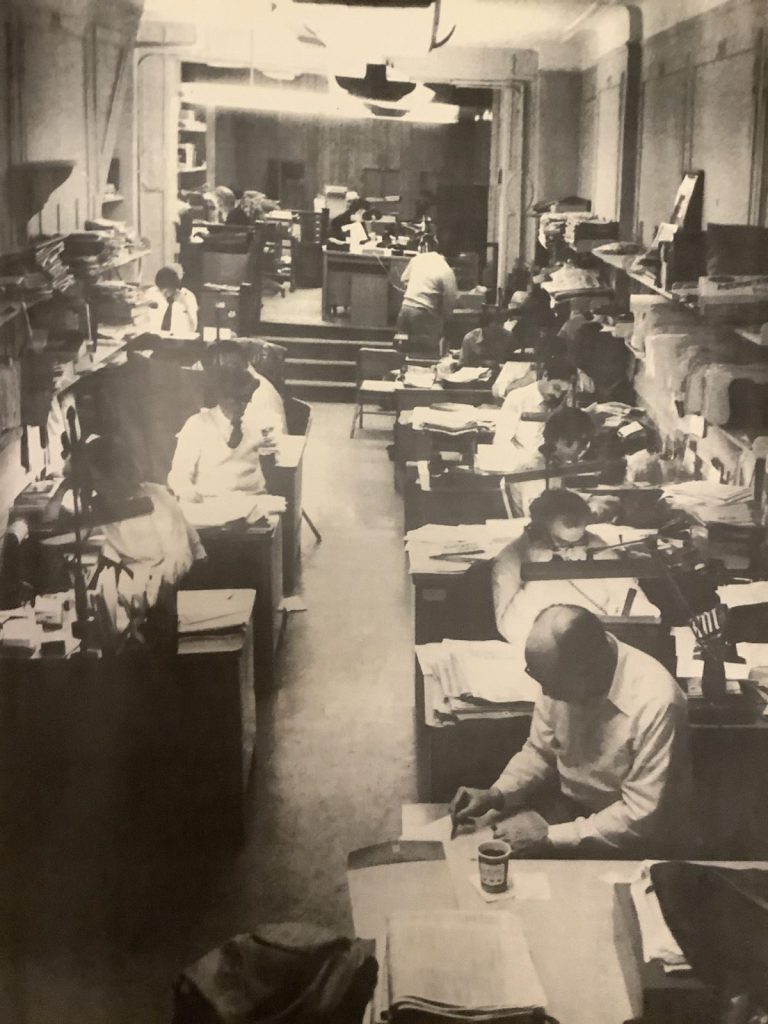By Steve Knoll
New York, Jan. 10, 2023
When I joined Variety in 1965 as a TV-radio reporter and reviewer (my signature was Knol.), the broadcast networks dominated the media landscape. I remember when I was assigned to cover a meeting of the cable TV industry association at the Statler Hilton Hotel. It didn’t even fill a small auditorium. There was plenty of room to spare. Today cable TV is a $94 billion business whose annual confab overflows the Chicago convention center.

Back then, the broadcast television beat was centered on three companies: CBS, NBC and ABC. Each of those companies had a Variety reporter assigned to it as virtually a full-time beat. It so happened that the three network skyscrapers on Sixth Avenue were a short walking distance from Variety‘s 46th Street offices. Reporters were expected to make the rounds of their assigned network, moving from floor to floor to keep in touch with old sources and cultivate new ones. They were expected to blend in with the scenery so they were not regarded as outsiders as they went about their business of reading memos on desks upside down. This was before security barricades were erected at the lobby entries of office buildings. In my era, if a reporter spent too much time at his Variety desk in the office, he was considered to be goofing off (except of course on deadline day).
When I came on board the three beat reporters were: Bill Greeley (Bill), Jack Pitman (Pit., who later moved to the London bureau) and Murray Horowitz (Horo.) The network beat rotated among all three. Horowitz also covered TV syndication. (As a reviewer, he was known for his distinctive use of the language, having once used the expression “plummeting upward.”) Eventually he left and I went on to cover ABC and CBS. In 1969, Bob Knight joined the New York staff and for 20 years covered TV programming and ratings with extraordinary depth and insight. The top entertainment executives at the networks not only had the greatest respect for Knight, they actually gained valuable insights from his reporting and statistical analysis.
It was not only the network headquarters that Variety reporters were expected to patrol, it was the news divisions as well. NBC News shared space with the rest of the network in what was then called the RCA Building. CBS News and ABC News had separate facilities on the upper West Side, but they were easily accessible with a short cab ride.
For many years, the weekly edition of Variety was piled high on Manhattan’s newsstands on Wednesdays, next to the daily newspapers. The paper’s unique clout gave the reporters representing it a special cachet. Bill Greeley understood it was not his personal charisma which explained the attention bestowed on him as the man from Variety. He often said, “You take off the Variety sweatshirt and see what happens.”
For a 21-year-old novice, dining at Sardi’s and being treated as a celebrity was a new experience. Once, on a tour of the CBS newsroom, I was introduced to the network news luminaries. Most played the part that was expected of them, but the sardonic Reid Collins (who later served as a CNN anchor) would have none of it. He greeted me with the words, “If I knew you were coming, I’d have baked a cake.”
After my article on the history of radio appeared in the 1966 Anniversary Issue, I was invited by Dallas Townsend, the anchor of the CBS World News Roundup, to lunch at the University Club. I had admired him for years, and here I was sitting across from him. We stayed in touch throughout my years on Variety. Townsend and Murrow were cut from the same cloth, setting the standard for all who followed.
Today, in addition to four broadcast networks, the turf of the “media reporter” (as he or she is now called) includes umpteen cable channels, not to mention streaming services and social media. CBS, NBC and ABC no longer receive the undivided scrutiny they once did at Variety when they ruled the broadcast roost. In the trade press, the center of gravity has shifted from New York to Hollywood. Of course, in a virtual world that doesn’t matter as much as it would otherwise. Still, I feel nostalgic for the days when shoe-leather reporting was still in style. I miss the classic Variety. Not only is the 46th Street office long gone, so are most of those who were present the day I entered the building for the first time in September of 1965. All that’s left are the memories of a distant past.
I have been accused by people who know me of living in the past. I’m afraid I’ll have to plead guilty. Still, one of the compensations of growing old is that, simply by virtue of your age, you become an authority on the way things used to be.
